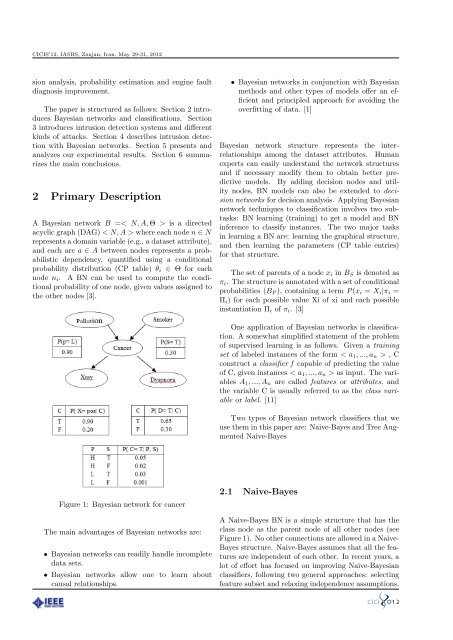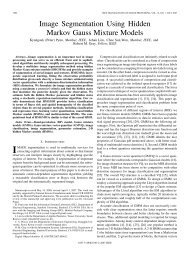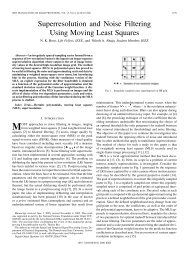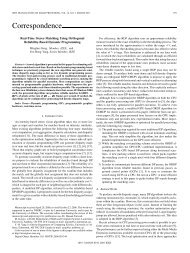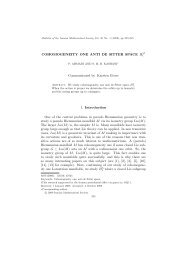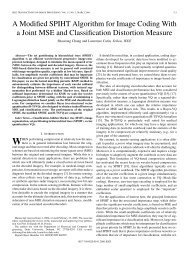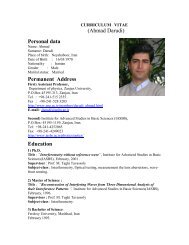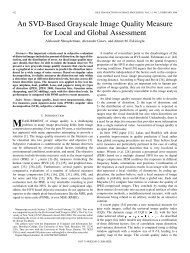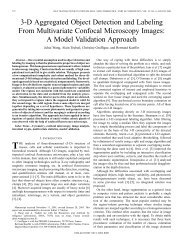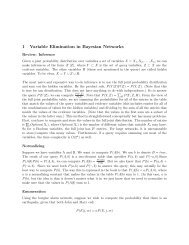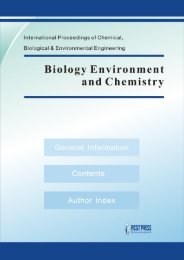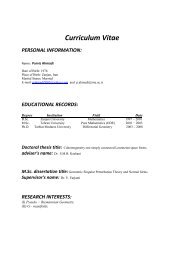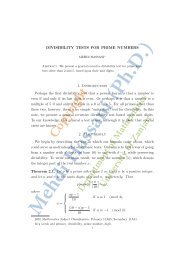Network Intrusion Detection Using Tree Augmented Naive-Bayes
Network Intrusion Detection Using Tree Augmented Naive-Bayes
Network Intrusion Detection Using Tree Augmented Naive-Bayes
Create successful ePaper yourself
Turn your PDF publications into a flip-book with our unique Google optimized e-Paper software.
CICIS’12, IASBS, Zanjan, Iran, May 29-31, 2012<br />
sion analysis, probability estimation and engine fault<br />
diagnosis improvement.<br />
The paper is structured as follows: Section 2 introduces<br />
<strong>Bayes</strong>ian networks and classifications. Section<br />
3 introduces intrusion detection systems and different<br />
kinds of attacks. Section 4 describes intrusion detection<br />
with <strong>Bayes</strong>ian networks. Section 5 presents and<br />
analyzes our experimental results. Section 6 summarizes<br />
the main conclusions.<br />
2 Primary Description<br />
A <strong>Bayes</strong>ian network B =< N, A, Θ > is a directed<br />
acyclic graph (DAG) < N, A > where each node n ∈ N<br />
represents a domain variable (e.g., a dataset attribute),<br />
and each arc a ∈ A between nodes represents a probabilistic<br />
dependency, quantified using a conditional<br />
probability distribution (CP table) θ i ∈ Θ for each<br />
node n i . A BN can be used to compute the conditional<br />
probability of one node, given values assigned to<br />
the other nodes [3].<br />
• <strong>Bayes</strong>ian networks in conjunction with <strong>Bayes</strong>ian<br />
methods and other types of models offer an efficient<br />
and principled approach for avoiding the<br />
overfitting of data. [1]<br />
<strong>Bayes</strong>ian network structure represents the interrelationships<br />
among the dataset attributes. Human<br />
experts can easily understand the network structures<br />
and if necessary modify them to obtain better predictive<br />
models. By adding decision nodes and utility<br />
nodes, BN models can also be extended to decision<br />
networks for decision analysis. Applying <strong>Bayes</strong>ian<br />
network techniques to classification involves two subtasks:<br />
BN learning (training) to get a model and BN<br />
inference to classify instances. The two major tasks<br />
in learning a BN are: learning the graphical structure,<br />
and then learning the parameters (CP table entries)<br />
for that structure.<br />
The set of parents of a node x i in B S is denoted as<br />
π i . The structure is annotated with a set of conditional<br />
probabilities (B P ), containing a term P (x i = X i |π i =<br />
Π i ) for each possible value Xi of xi and each possible<br />
instantiation Π i of π i . [3]<br />
One application of <strong>Bayes</strong>ian networks is classification.<br />
A somewhat simplified statement of the problem<br />
of supervised learning is as follows. Given a training<br />
set of labeled instances of the form < a 1 , ..., a n > , C<br />
construct a classifier f capable of predicting the value<br />
of C, given instances < a 1 , ..., a n > as input. The variables<br />
A 1 , ..., A n are called features or attributes, and<br />
the variable C is usually referred to as the class variable<br />
or label. [11]<br />
Two types of <strong>Bayes</strong>ian network classifiers that we<br />
use them in this paper are: <strong>Naive</strong>-<strong>Bayes</strong> and <strong>Tree</strong> <strong>Augmented</strong><br />
<strong>Naive</strong>-<strong>Bayes</strong><br />
Figure 1: <strong>Bayes</strong>ian network for cancer<br />
The main advantages of <strong>Bayes</strong>ian networks are:<br />
• <strong>Bayes</strong>ian networks can readily handle incomplete<br />
data sets.<br />
• <strong>Bayes</strong>ian networks allow one to learn about<br />
causal relationships.<br />
2.1 <strong>Naive</strong>-<strong>Bayes</strong><br />
A <strong>Naive</strong>-<strong>Bayes</strong> BN is a simple structure that has the<br />
class node as the parent node of all other nodes (see<br />
Figure 1). No other connections are allowed in a <strong>Naive</strong>-<br />
<strong>Bayes</strong> structure. <strong>Naive</strong>-<strong>Bayes</strong> assumes that all the features<br />
are independent of each other. In recent years, a<br />
lot of effort has focused on improving <strong>Naive</strong>-<strong>Bayes</strong>ian<br />
classifiers, following two general approaches: selecting<br />
feature subset and relaxing independence assumptions.


